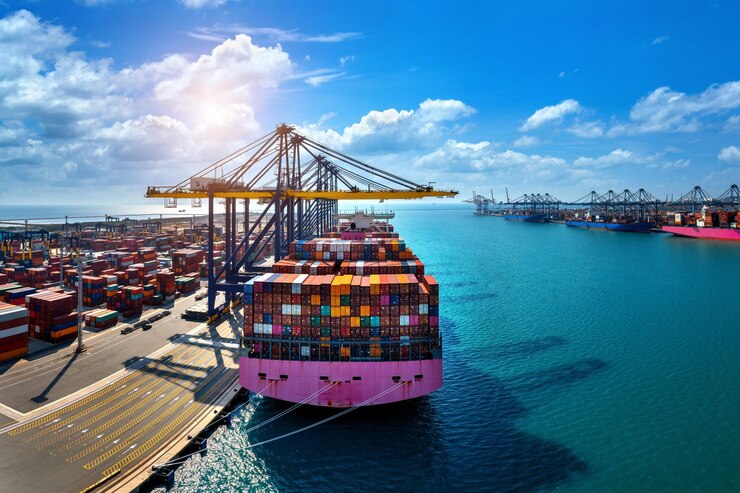External trade has become a vital part of many companies' business operations. However, it carries a series of risks and challenges related to customs compliance, accurate documentation, and operational efficiency. To mitigate these risks, a Preventive External Trade Audit plays a crucial role.

What is a Preventive External Trade Audit?
A Preventive External Trade Audit is a proactive process of reviewing and evaluating the operations, procedures, and documentation related to a company's import and export activities. The goal is to identify and correct potential errors or non-compliance before they result in major issues,such as penalties, fines, delays, or legal disputes.

5 Functions of a Preventive External Trade Audit
The functions of a Preventive External Trade Audit are multiple and cover several key aspects of international business operations:
- Document Verification: Document verification involves a thorough review of all documents related to external trade transactions. This includes:
- Commercial invoices
- Certificates of origin
- Customs declarations and transport contracts
It is essential to ensure that all these documents are accurate, complete, and comply with current regulations.
- Regulatory Compliance: In terms of regulatory compliance, the audit assesses:
Whether the company’s External Trade operations comply with both national and international Customs and Trade regulations. Identifying risk areas and recommending corrective measures is crucial to ensure the company remains within the legal framework.
- Operational Efficiency: The analysis of operational processes seeks to identify inefficiencies and propose improvements that optimize the time and costs associated with External Trade OperationsImproving operational efficiency not only reduces costs but also speeds up response times and enhances customer service.
- Risk Management: Risk management involves identifying potential risks associated with import and export operations. These can include:
- Exchange rate fluctuations
- Changes in trade regulations and transport risks.
Developing strategies to mitigate these risks is essential to protect the company's interests and ensure the continuity of its operations.
Training and Development: Finally, continuous training and development of staff is vital. Providing training ensures that employees are up to date with the latest regulations and best practices.

The 6 Phases of a Preventive External Trade Audit
A Preventive External Trade Audit is conducted in several phases, each of which is crucial to ensure a thorough and effective evaluation:
- Planning and Preparation: The first phase of a preventive audit is planning and preparation. At this stage, the scope and objectives of the audit are defined. Preliminary information about the company’s External Trade Operations is collected, and a detailed audit plan is developed. This plan includes a timeline and allocation of the necessary resources to effectively carry out the audit.
- Data Collection: The next phase is data collection, where relevant documents, records, and data are reviewed and analyzed. This also includes interviews with personnel involved in External Trade Operations and observing processes and procedures in action. This information gathering is crucial to have a complete and accurate view of the company’s operations.
- Analysis and Evaluation: Once the data is collected, the next step is analysis and evaluation. The accuracy and integrity of the documentation are assessed, and compliance with regulations and standards is analyzed. Additionally, areas for improvement and potential risks are identified. This detailed analysis allows for identifying the strengths and weaknesses External Trade Operations of the company.
- Audit Report: After the analysis and evaluation, a detailed audit report is prepared. This report summarizes the audit findings and provides recommendations for corrective actions and improvements. The report is presented to senior management and relevant personnel, ensuring that everyone involved is aware of the results and recommendations.
- Implementation of Improvements: Once the report is presented, the next phase is the implementation of improvements. The company is assisted in implementing the audit’s recommendations, and action plans are developed to address the identified areas for improvement. Follow-up and monitoring are conducted to ensure that the improvements are effective and sustained over time.
- Re-evaluation and Follow-up: Finally, reevaluation and follow-up are carried out. Follow-up audits are conducted to assess the progress and effectiveness of the implemented improvements. If necessary, additional adjustments are made to ensure continuous compliance and operational efficiency. This phase ensures that the company continues to improve and maintain high standards in its External Trade operations.

Duration of a Preventive External Trade Audit
The duration of a Preventive External Trade Audit can vary depending on the size of the company and the complexity of its operations. Generally, a complete audit can take anywhere from several weeks to a few months. This includes all phases, from initial planning to reevaluation and follow-up.
Who is the Preventive External Trade Audit For?
The preventive external trade audit is intended for any company involved in import and export activities. This includes small and medium-sized enterprises as well as large multinational corporations. It is particularly relevant for companies looking to improve regulatory compliance, optimize their operations, and manage risks more effectively.
4 Main Industries Using Preventive External Trade Audits
Although all companies involved in International Trade can benefit from a preventive audit, certain industries have a particularly high need for this service:
- Manufacturing: Manufacturing companies that rely on importing raw materials and exporting finished products.
- Technology: Technology companies that import electronic components and export technological products.
- Retail: Large retail chains that handle a high volume of imports and exports of goods.
- Automotive: The automotive industry, which manages the import of parts and the export of vehicles.
A Preventive External Trade Audit is an essential tool for companies involved in International Trade. By identifying issues early and implementing improvements, companies can ensure regulatory compliance, improve operational efficiency, and mitigate risks.By understanding the functions and phases of a preventive audit, as well as the benefits it offers, companies can take proactive measures to protect their interests and enhance their competitiveness in the global market.
At EO Consulting, we are your strategic ally in preventive foreign trade auditing, thanks to our experience in customs regulations, long-term sustainable implementations and risk reduction strategies to protect customs operations. Contact us today!
 Blvd. Capitán Carlos Camacho Espíritu 725, Prados Agua Azul, 72430 Heroica Puebla de Zaragoza, Pue.
Blvd. Capitán Carlos Camacho Espíritu 725, Prados Agua Azul, 72430 Heroica Puebla de Zaragoza, Pue.


